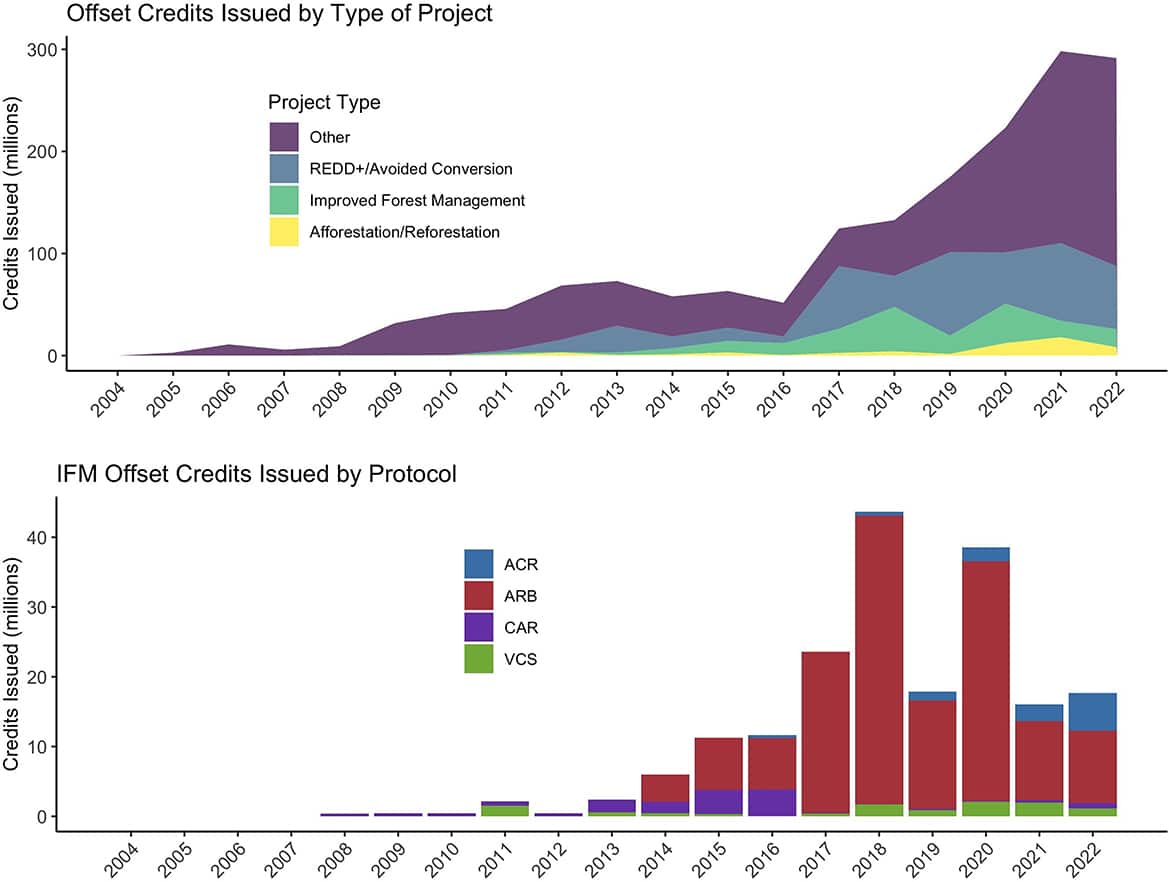Manulife Investment Management, the world’s largest manager of natural capital, overseeing almost $15 billion in assets involving timberland and agriculture, has revealed the initial close of its Forest Climate Fund or FCF.
Manulife’s FCF, launched last year, is a strategy that involves producing carbon credits through natural carbon sequestration. It is a closed-end fund intended to provide U.S. investors and select institutional investors an opportunity to champion climate change mitigation through the stewardship of sustainably managed forests.
Around 70% of the fund will be invested in carbon projects.
The goal is to prioritize carbon sequestration over timber harvesting. Alongside its affiliated offshore entities, the fund has garnered commitments amounting to around $224.5 million. The fund aims to reach its targeted offering of $500 million.
Generating High-Quality Carbon Credits
The strategy’s investment goal centers on enabling investors to engage in timberlands managed to produce high-quality carbon credits through enhanced sustainable forest management practices.
By increasing the amount of carbon stored in forests, the projects not only generate credits but also mitigate global warming. The strategy also includes establishment of new forests through afforestation or reforestation, generating high-quality credits while securing sustainable timber value.
By leveraging carbon credits, conservation easements, and limited timber harvests, the fund aims to capture potential climate benefits while ensuring competitive financial returns for investors.
The financial success of carbon projects like these hinges on future predictions of carbon prices. And estimations often show an optimistic outlook in this regard.
Historically, forest carbon credits have faced notable pricing fluctuations, particularly within voluntary carbon markets, often characterized by relatively low prices. However, the scenario has been shifting due to the surge in net zero commitments made by both companies and investors.
Forestry projects accounted for 30% of the total carbon offset credits issued by voluntary registries in 2022. These projects come in various types including improved forest management (IFM) and afforestation/reforestation.
According to an analysis by Haya et al. (2023), IFM projects have produced 193 million carbon offset credits since 2008. That amount accounts for 28% of the total credits from forest projects and 11% of all credits generated in voluntary markets.
Moreover, there’s also a growing perception of natural climate solutions as having high value. These factors contribute positively to the upward momentum in carbon pricing.
FCF and the Voluntary Carbon Market
Despite a number of investigations revealing the weakness of forest carbon sequestration, investors are still interested in natural climate solutions. In fact, projections show that carbon reductions initiatives involving forests and other natural environments will continue to expand.
Highlighting their expertise and experience in sustainable forest management, Eric Cooperstrom noted that:
“The Manulife Forest Climate Fund expands on our decades of sustainable timberland management experience and is one of the natural climate solutions we have developed to sequester carbon more intensively and drive broader impact.”
Manulife plans to allocate the carbon credits to investors via direct in-kind transfers. This will allow them to use the credits to fulfill their individual climate objectives or potentially monetize them in voluntary carbon markets through offset sales to attain financial value.
Carbon offsets are sold through various exchanges, online marketplaces, and directly via carbon projects that reduce or remove emissions.
Manulife’s current portfolio of sustainably managed forestry assets cover the U.S., Canada, Australia, New Zealand, and South America. Overall, it oversees around 5.5 million acres of timberland, with majority in the U.S., representing over 95% of improved forest management carbon credits issued and retired.
Forestlands are one of the most valuable nature-based solutions to fight climate change. Climate investors find that protecting forests (REDD+) is important to win the fight against the climate crisis.
Manulife’s Forest Climate Fund is a carbon-focused impact investment strategy. It’s the company’s first natural capital fund recognized under Article 9 of the European Commission’s Sustainable Finance Disclosure Regulation (SFDR).
Natural capital strategies that produce carbon credits have expanded recently. But the way they distribute the credits differ.
Stafford Capital Partners also launched its own forest carbon credit fund early this year, the Carbon Offset Opportunity Fund. The fund raised $242 million in investor commitments from three UK local government pensions schemes.
By prioritizing carbon sequestration over timber harvesting, Manulife IM’s Forest Climate Fund exemplifies a commitment to carbon reduction and sustainable forest stewardship. Manulife’s innovative approach aims to generate high-quality carbon credits while ensuring both environmental impact and financial returns for investors, bolstering the fight against climate change.


